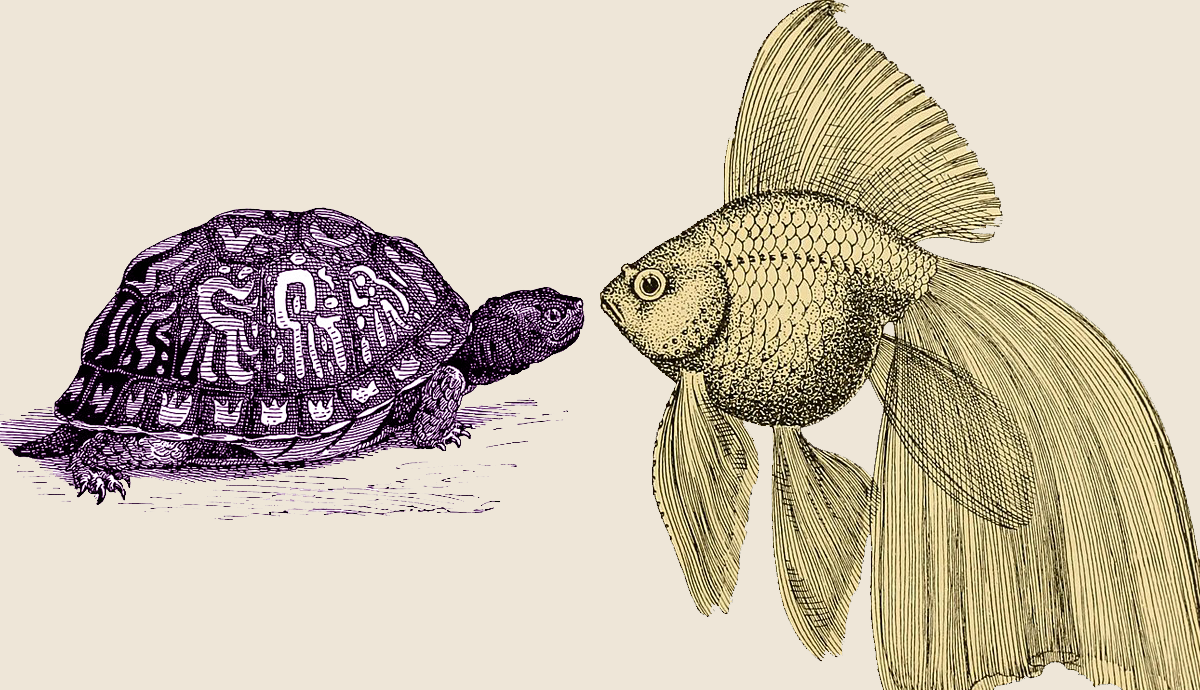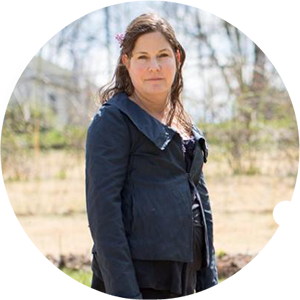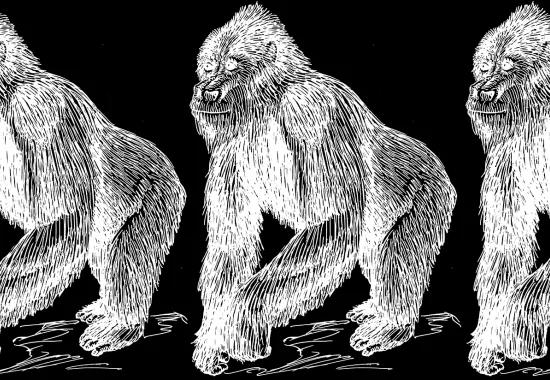Learning from Turtles, Talking to Fish
My goldfish, Ophelia, is free of worry and conflict. At least that’s what I tell myself as I watch her swirl in her pocket of water. The bowl is flawless, an exquisite circle. When she comes up for air, it’s a backbend—the bewildering kind gymnasts accomplish on the balance beam. It’s winter now, so we’re inside more, me and Ophelia and the cat. The three of us watch as the light moves across the toile wallpaper, accentuating different vignettes of figures marauding around the French countryside.
I just finished reading an article to Ophelia about a man who lived for eleven years in the departure lounge of Terminal One at Charles de Gaulle airport. He set up shop there, spent his days reading and studying economics. He had a lamp and everything. People who worked in the airport brought him food and Le Monde. Journalists flocked to see him. I tell Ophelia how his glassed-in corner of a building is not all that different from her abode. She doesn’t seem to care, just arches up to the water’s surface to get another sip of air. So, I change the subject to turtles.
Nobody knows exactly what they feel once they’ve tucked themselves into their personal suitcases. But let’s all agree they are beloved in a remote kind of way. Try to recall the times you’ve come across a box turtle in the middle of a country road. You stop the car, look both ways and pick up this beguiling shell, mosaic of orange and brown into which the turtle has surreptitiously tucked itself. You escort it to whatever woods flank the pavement or gravel, hoping against all odds it will be okay. Consider for a moment what the turtle must be thinking: Where was it I was going? Didn’t there used to be a puddle here? I’m almost 100% sure of it.
The turtle never gives up—such tenacity. Last week I relocated one who happened to have meandered up on a curb in the parking lot outside Laundry Land. This is, of course, a story unto itself. But on the other side of the plate glass, my turtle withstood a momentous journey—destination unknown. Once I set him down, he nonchalantly poked his head out and scooted on his way. The whole thing felt a bit like holding my great aunt’s arm as she crossed the street. She, too, was stupefyingly independent and unobjectionable. Just occasionally needed a little help getting over the curve.
I should establish that in this brief treatise I am going to leave out the snapping turtle because a decade ago a three-foot one hoisted herself out of a pond and into my neighbor’s living room where our toddlers were playing. It scared the bejesus out of all of us. That kind of thing is hard to unsee.
But in this world where we can look up just about anything, I luxuriate that my knowledge is an observational one.
Turtles embody affability. When someone twenty times their size picks them up and moves them, they adapt. They simply come to terms with what has happened. Next time you find yourself dismayed, envision the turtle who stays focused on the task, the very poster child for keep calm and carry on.
I met one this morning in a roadside ditch, decayed leaves her temporary nest. I admired from afar as she strove to get her footing, to haul herself out of that precarious place. Last night’s gulley washer must have landed her there. But not a complaint out of her. No siree. Just brushed herself off and continued on her way. Which, if you think of it, is an act of faith, faith being trust in a person or idea. And that’s what the turtle does. If it finds itself lost, it scooches in search of someone or something to recognize. Don’t we do that too?
Given a quiz on turtles, I’d fare rather poorly; I know few real facts. But in this world where we can look up just about anything, I luxuriate that my knowledge is an observational one. This morning’s turtle sported a shell that had chevrons in the color of mandarin oranges. I told her she was one lovely being.
Turtles are noble. Yup, that’s really the right word. They have old souls. They’ve been around the block a time or two, so to speak. Or around the meadow. Or the pond. Not to overly anthropomorphize, but they seem to be high moral characters. I mean, who are they out to hurt? Not a soul. At night, the shadows fill in around them, and the turtles allow themselves to rest.
In 1859, when Darwin rocked the world with his revelations of where we really came from, most people didn’t want to know the truth. How could this be, they argued, as he unveiled his mutinous discovery that only the most adaptive survive to produce offspring. While he primarily used the finch to prove his point, he spent a great deal of time studying turtles. So, there’s that.
At the summer camp I went to for ten years, there was a lilliputian natural history museum, the size of an outhouse, room for only one person at a time. But on the wooden shelves were specimen jars filled with ethanol housing a baby mouse, aphids, larvae. There were horses’ teeth, birds’ nests, feathers, fossils, arrowheads, a diamondback’s rattle and tortoise shells, a dozen of them. These we were allowed to handle.
Because the museum was tucked in the woods on route to the dining hall, we’d stop in frequently to inspect the newest acquisitions. Eleanor, whose specialty at camp was archery, who’d get bullseye after bullseye as if there was nothing to it, would lift a carapace to her ear, the way you would a conch, and pretend she could hear the once-turtle speak. She would tell whoever tagged along that the turtle had a sleepless night and was groping along in search of a katydid to satiate her hunger. Sometimes she’d say, I’ll name this one Beatrix because she loves rabbits. It was exquisite, Eleanor bringing to life this mottled shell.
What is the opposite of a turtle? At first, I answer hedgehog because its quills seem in direct contradiction with a shell. Because to be a true opposite one must share certain qualities. And both are solitary beasts preferring time alone, both deep introverts. And both are pretty much circular, which few animals are. Except June bugs, ladybugs, beetles. Maybe I’ll just say the giraffe is the opposite, with its long neck, so much of it exposed to the world.
If it is not too hot, the eastern box turtle will be found basking in the sun. In the cold months, they hibernate in shallow holes in the ground or mud. Like an acorn twinned with another acorn or two trees growing from one base, I tell Ophelia that I wish for turtles to find traveling companions, comrades, someone to look out for them in the rare case they find themselves stranded, in case, like us, they are unable to get back up without a little bit of help.
Recommended
Schizophrenic Sedona
Recense (realized)
Notes on Hands






